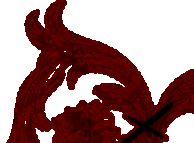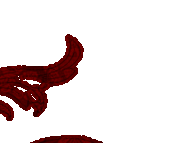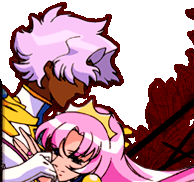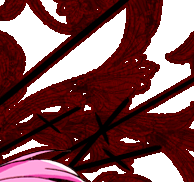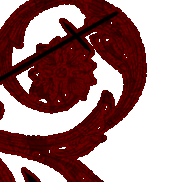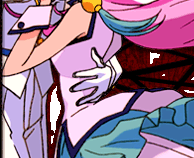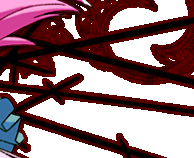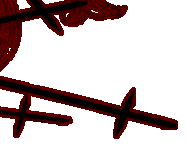
Cosmopolitan Designs in Salman Rushdie's 'The Enchantress of Florence'
and Hermann Hesse's 'Demian'
(Including an excursus on Kunihiko Ikuhara's anime-series 'Revolutionary Girl Utena')
This analysis
was donated by Meike Nederveld.  5 Final Thoughts I have discussed Rudie's and Hesse's cosmopolitan designs, which overlap in a
sense of universalism, though not exhaustingly so. While Hesse constructs his
model along ideas of natural law and evolution, ideas tainted with
enlightenment's tendency to stereotype and eurocentrism, Rushdie paints a
diverse picture of international phenomena permeated by synchronicity, from
which a model of a world emerges that is connected by exiles and wanderers and
their interpretations of it.
Both novels and the TV-series Utena, all from different cultural backgrounds,
share, as I have demonstrated, several motives. Significantly, two of the texts, the
Enchantress and Utena, while (probably) oblivious to each other, arrive at
profoundly similar motives beyond what is explicit within their source material.
This similarity may be a consequence of an inherent cultural logic to these
motives, resulting in their continuation also adhering to this logic, and thus
forming similar results, or of a wider intertextual relationship, a wider shared
canon than I have discussed here. On the other hand, as a reader, a traveler in the
magical worlds of Demian, Enchantress and Utena, the idea of synchronicity in a
Jungian sense is probably more appealing. The principle of synchronicity borders
on the occult, on a mystical quality of the connection between human thought
and the laws of nature, and is as such a product of its time. Within the act of
interpretation, it occupies the space of doubt between the intertextual and the
coincidental, the point at which a system uncannily continues to apply despite
(apparently) having exhausted its basis in the causal. In scientific analysis, this
space is often covered by employing the subconscious, or expanding the role of
coincidence, as the idea of a superior frame of meaning is not consistent with
science, but in literature, especially when employing metafiction and historical
fiction, leaving that space open will make the reader fill it with the mystical,
creating a feeling of magicalness that bleeds out into the real world. When such
apparent synchronicities exceed their native texts, they reinforce this effect, and
make the reader feel part of that magical order of meaning, creating an immense
appeal: “[...] alles blickte ins große und Weite, und alles deutete auf Abraxas.”
(Hesse, 114) This meaningful connectedness with the world is a fantasy, of
course, but fantasy is a shared human nature, an ambiguous force with which we
negotiate self and other, and which drives us to the places of our dreams, into a
greater context of the real world.
 Bibliography
Anderson Sasser, Kim. Magic Realism and Cosmopolitanism: Strategizing Belonging. London:
Palgrave McMillan, 2014.
Baumann, Günter. "Hermann Hesses 'Demian' im Lichte der Psychologie C.G. Jungs." Materialien
zu Hermann Hesses 'Demian' II. Frankfurt am Main: Suhrkamp, 1997.
Fine, Robert. Cosmopolitanism. London & New York: Routledge, 2007.
Hegerfeldt, Anne. "Magischer Realismus." Metzler Lexikon: Literatur. Dieter Burdorf et al.
Stuttgart: J.B. Metzler, 2007. 469.
Hesse, Hermann. Demian: Die Geschichte von Emil Sinclairs Jugend, Frankfurt am
Main:Suhrkamp, 1974.
Kant, Immanuel. "Über den Gemeinspruch: Das mag in der Theorie richtig sein, taugt aber nicht für
die Praxis." Abhandlungen nach 1781 (Online resource). Duisburg-Essen: Korpora.org, 2007.
http://www.korpora.org/kant/aa08/Inhalt8.html (last visited 26.6.2015)
Kant, Immanuel. Zum Ewigen Frieden und andere Schriften. Frankfurt am Main: Fischer Verlag,
2008.
Kleingeld, Pauline and Eric Brown. "Cosmopolitanism." Stanford Encyclopedia of Philosophy (Online resource). Stanford: The Metaphysics Research Lab, 2013.
http://plato.stanford.edu/entries/cosmopolitanism/ (last visited 26.6.2015)
La Fillette Revolutionnaire Utena: The Movie. Dir. Kunihiko Ikuhara. Anime Virtual, 2006. DVD.
Mishra, Vijay. "Rushdie-Wushdie: Salman Rushdie's Hobson-Jobson." New Literary History. Vol.
40, 2009. 385-410
Roth, Remo F. "Introduction to Carl G. Jung's Principle of Synchronicity." Unus Mundus (Online
article). Zürich: Pro Litteris, 2002. http://paulijungunusmundus.eu/synw/synchronicity_jung.htm
(last visited 26.6.2015)
Rushdie, Salman. The Enchantress of Florence. London: Jonathan Cape, 2008.
Utena: La Fillette Revolutionnaire. Writ. Be-papas. Dir. Kunihiko Ikuhara. Anime Virtual, 2003.
DVD.
Other sources:
http://ja.wikipedia.org/wiki/少女革命ウテナ (last visited 26.6.2015)
The following are links to clips from Utena uploaded (unauthorisedly, no doubt) on Youtube, as
well as images for illustration.
https://www.youtube.com/playlist?list=PLFaVPYzCXTcGSRpkQc14QwkOhciN_kg-n
(the complete series with partly english, partly spanish subtitles, and the movie with spanish
subtitles.)
https://www.youtube.com/watch?v=wyYs1Mc_XAg
(the opening)
https://www.youtube.com/watch?v=xR_EXs-XKRw
(a trailer for the movie)
https://www.youtube.com/watch?v=McKR0IgCM34
(the cited passage about the egg and revolution)
https://www.youtube.com/watch?v=ubmJmqtyi-A
(example of a duel, in this case with Juri)

From top left: Tôga, Akio, Saionji.
Second row: Miki, Utena, Juri. Bottom:
Nanami, Anshi, Chuchu (series mascot).
http://ohtori.nu/gallery/Series/Artwork/Group_Shots/Group_07

Left: Mamiya, Right: Mikage.
http://gallery.minitokyo.net/view/91608

Anshi and Dios.
http://i42.photobucket.com/albums/e320/wellworm/Series_ep34_172_zps962d094a.jpg
 |

